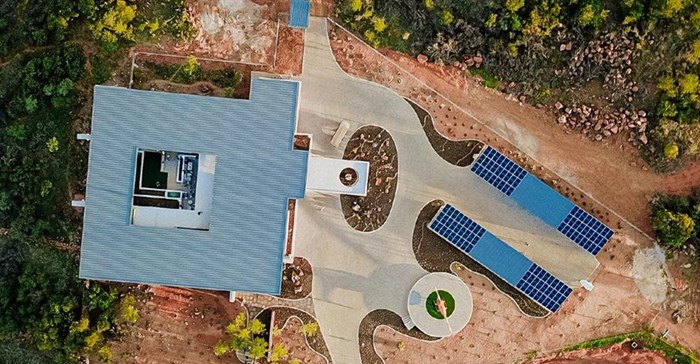
Solar remains the sustainable solution to SA’s energy crisis

Battery backup systems, while providing temporary respite during power outages, still depend on Eskom for recharging. This inadvertently exacerbates the strain on an already overburdened power grid. To genuinely alleviate Eskom’s burden and address the energy shortfall, it’s imperative for households to generate electricity independently. The most effective way to accomplish this is through the adoption of solar power.
Solar power offers a decentralised solution to South Africa’s energy crisis. By installing solar panels, households can produce their own electricity, reducing their dependence on Eskom and easing the pressure on the national grid. This decentralised approach empowers individuals to take control of their energy generation, making a meaningful contribution to the overall energy landscape.
Using solar energy to charge batteries actively helps to address the national energy shortage. By harnessing sunlight as a plentiful and renewable resource, households and municipalities can reduce their reliance on Eskom’s power sources, such as nuclear and coal plants. This, in turn, eases the strain on Eskom and reduces the need for loadshedding.
Battery backups put strain on local network
When using battery backup systems, it’s important to consider their potential impact on power consumption and the strain they can place on the local power network. After a power outage, when the electricity comes back on, the batteries immediately start recharging while the household is also drawing power from the grid.
This double power consumption may exceed the capacity of local electrical networks causing them to trip or – in a worst-case scenario – damage them. This then requires the local municipality to send personnel to restart or repair the substation, leading to further prolonged power outages for all the power users in the same area.
To tackle this issue, homeowners have a few choices. They can use technology to control their inverter so that it doesn’t immediately draw power from the grid to recharge the batteries as soon as the loadshedding period ends, but rather waits for an hour or so.
Correctly configured, this still gives ample time for the batteries to recharge before the next round of loadshedding, without putting additional strain on the grid right when the electricity is restored.
Solar is still the best option
However, the best option is to recharge the batteries using solar energy, reducing the dependence on Eskom’s power entirely. This method recharges the batteries with power that has no impact on the grid, whilst still ensuring that the batteries are ready in time for the next outage.
Storing power also benefits Eskom. At times, Eskom may generate more power than the immediate demand requires. However, as the day progresses and demand increases, Eskom may struggle to meet the logistical equation of supply and demand.
By using battery storage, individuals can help bridge this gap by accessing stored power during peak demand periods, reducing strain on the grid and potentially lessening the need for loadshedding.
The key message remains clear: if individuals are not generating their own power through solar channels, they are not effectively helping to alleviate the power crisis faced by Eskom. Generating and storing power independently is crucial to reduce reliance on the grid and ensure a more sustainable energy future.
About Dylan Schnetler
Dylan Schnetler is commercial head for Synapse Ultra at Rubicon














